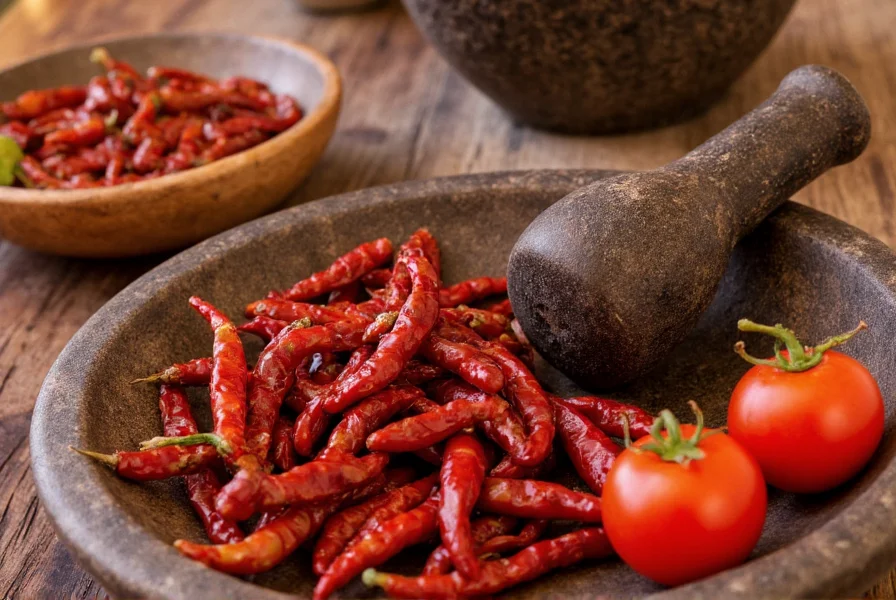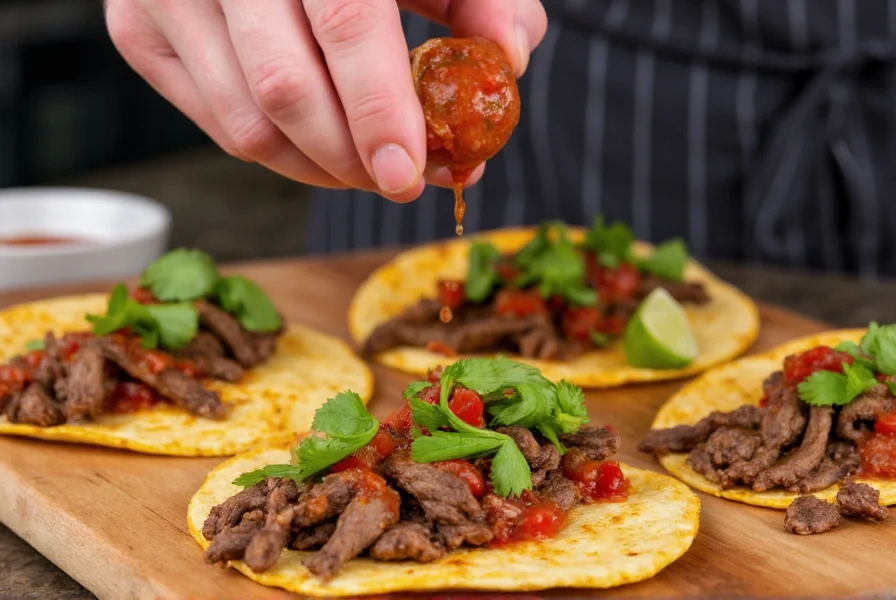Understanding the authentic preparation and applications of chipotle red chili salsa separates casual kitchen experiments from truly flavorful results. This guide explores the traditional ingredients, preparation methods, and culinary uses that define this popular Mexican sauce.
Core Ingredients and Their Roles
The distinctive character of chipotle red chili salsa comes from carefully selected components working in harmony. The foundation consists of:
- Dried red chilies (guajillo and ancho) - Provide earthy base notes and vibrant color
- Chipotle peppers in adobo - Deliver signature smokiness and moderate heat
- Ripe tomatoes - Add acidity and balance the chili intensity
- Garlic and onion - Create aromatic depth
- Cumin and oregano - Contribute traditional Mexican seasoning
Unlike many commercial versions that rely heavily on vinegar for preservation, authentic chipotle red chili salsa achieves its tang through properly roasted tomatoes and controlled fermentation. The ratio of chipotle to dried red chilies determines whether the salsa leans more smoky or earthy—a balance professional chefs adjust based on intended use.

Flavor Profile Analysis
Chipotle red chili salsa occupies a unique position in the salsa spectrum. Understanding its flavor components helps optimize usage:
| Flavor Component | Intensity Level | Contribution to Overall Taste |
|---|---|---|
| Smokiness | Medium-High | From chipotle peppers, creates depth without overwhelming |
| Heat | Medium (2-4/10) | Warmth builds gradually, not immediate burn |
| Earthiness | Medium | From dried red chilies, provides complexity |
| Acidity | Low-Medium | Balances richness without sharp vinegar notes |
Distinguishing From Similar Salsas
Many confuse chipotle red chili salsa with related preparations. Key differences include:
- Chipotle salsa verde uses tomatillos and green chilies instead of red varieties, resulting in brighter acidity and herbal notes rather than earthy depth
- Traditional red salsa typically lacks chipotle peppers, missing the signature smokiness
- Adobo sauce is the liquid base for chipotle peppers but lacks the balanced complexity of full salsa
When evaluating authentic chipotle red chili salsa vs store-bought alternatives, check ingredient lists for artificial preservatives or excessive vinegar—indicators of compromised flavor development. The best versions develop complexity over 24-48 hours as flavors meld.
Culinary Applications Guide
Maximize chipotle red chili salsa's potential with these professional techniques:
Immediate Uses
- As a finishing sauce for grilled fish or chicken
- Mixed with mayonnaise for smoky sandwich spreads
- Swirled into black bean soup for depth
Recipe Integration
- Marinades: Combine with orange juice and garlic for carne asada
- Sauces: Thin with broth for enchilada sauce base
- Baking: Mix into cornbread batter for savory twist

Authentic Homemade Recipe
This traditional preparation yields approximately 2 cups of chipotle red chili salsa with balanced flavor development:
Ingredients
- 4-5 dried guajillo chilies, stems and seeds removed
- 2-3 dried ancho chilies, stems and seeds removed
- 2 chipotle peppers in adobo, plus 1 tablespoon adobo sauce
- 2 medium ripe tomatoes
- 3 garlic cloves, roasted
- ½ white onion, roughly chopped
- ½ teaspoon cumin
- ¼ teaspoon Mexican oregano
- Salt to taste
- 2 tablespoons avocado oil
Preparation Steps
- Rehydrate dried chilies in hot water for 15-20 minutes until pliable
- Char tomatoes and onion on comal or skillet until blistered
- Blend all ingredients until completely smooth (1-2 minutes)
- Heat avocado oil in skillet over medium heat
- Sauté blended mixture for 8-10 minutes, stirring frequently
- Cool completely before storing
For optimal flavor, refrigerate the chipotle red chili salsa for 24 hours before serving. This resting period allows the complex flavors to fully develop and integrate. The oil content helps preserve freshness while enhancing mouthfeel.
Storage and Shelf Life
Proper storage maintains quality and safety of your homemade chipotle red chili salsa:
- Refrigerate in airtight container for up to 2 weeks
- Freeze in ice cube trays then transfer to bags for up to 6 months
- Never leave at room temperature for more than 2 hours
- Always use clean utensils when serving to prevent contamination
Commercial chipotle red chili salsa typically contains vinegar and preservatives extending shelf life to 1-2 months refrigerated after opening. Homemade versions without these additives require more careful monitoring for freshness. Discard if mold appears or if the aroma becomes unpleasantly sour.
Frequently Asked Questions
Can I adjust the heat level in chipotle red chili salsa?
Yes, you can easily customize the heat level. For milder salsa, reduce chipotle peppers to one and remove all seeds from dried chilies. For hotter versions, add a small serrano pepper or increase chipotle quantity. Remember that heat intensifies slightly over the first 24 hours as flavors meld, so adjust conservatively.
What's the difference between chipotle red chili salsa and adobo sauce?
Adobo sauce is the tangy, tomato-based liquid in which chipotle peppers are preserved, while chipotle red chili salsa incorporates adobo sauce along with additional ingredients like dried red chilies, tomatoes, and spices to create a more complex, balanced condiment. Adobo sauce alone is too intense for direct use as a salsa.
Why does my homemade chipotle red chili salsa separate?
Separation occurs naturally in fresh salsas without emulsifiers. Simply stir well before serving. To minimize separation, ensure thorough blending and include sufficient oil in your recipe, which helps bind components. The separation doesn't indicate spoilage but rather the absence of artificial stabilizers found in commercial products.
Can I use chipotle red chili salsa as a marinade?
Absolutely. The acidity from tomatoes and natural enzymes in the chilies help tenderize proteins while imparting deep flavor. For best results, marinate meats for 2-12 hours depending on thickness. The chipotle red chili salsa works particularly well with chicken, pork, and firm fish like salmon. Avoid over-marinating delicate proteins which may become mushy.











 浙公网安备
33010002000092号
浙公网安备
33010002000092号 浙B2-20120091-4
浙B2-20120091-4